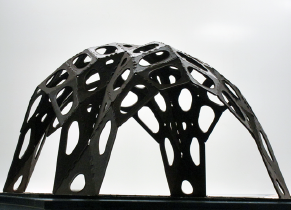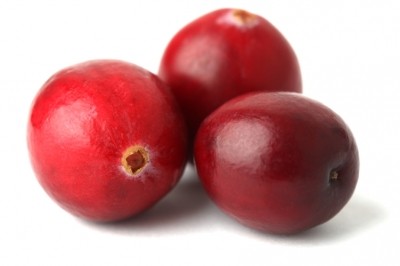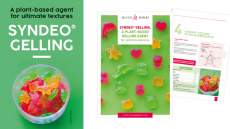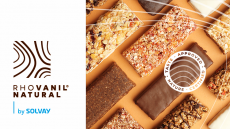BARRY CALLEBAUT WORKS WITH PRINCETON UNIVERSITY RESEARCHERS
Charlie and the Chocolate House! Study probes potential as building material
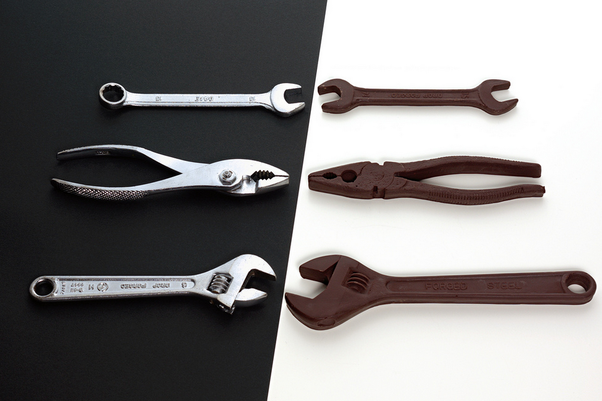
Writing in the April 2015 issue of Computer-Aided Design, Alexander Jordan and civil engineering and architectural colleagues at Princeton University, assisted by Barry Callebaut North America, examine novel designs to create a structural system that used chocolate as an “experimental building material”.
Emphasizing the fact that they used compound chocolate as their ‘chocolate’ – where the fat constituent is another type of vegetable fat, instead of cocoa butter – the scientists said that while countless studies have assessed chocolate’s taste, texture, appearance, rheology, production and shelf life, none have been performed on its structural material properties - including its strength and elasticity.
Jordan et al. conducted tests with various chocolate formulations, designed using the hypothesis that less fat and smaller particles, with greater surface area for cohesion, both make a chocolate stiffer.
Pavilion plans…in a New York café space
The first full-scale use of the team’s chocolate design methodology was designed as a pavilion for a café space; still awaiting construction, this is intended for display over 2-4 weeks in a temperature-controlled environment in what Jordan et al. describe as a typical New York City building.
“To avoid exposure to direct sunlight coming through the south-facing windows, obstruction of customers and staff traffic, and accidental collisions, the shell was designed to use the vertical space and span between the fixed pavilions that separate the café’s tables,” Jordan et al. write.
Made of sugar, cocoa powder, milk permeate and vegetable oil – cocoa butter is excluded to resist temperature changes – the team built a prototype with an 80cm span made from 6mm thick chocolate pieces (pictured) in 2013.
Individual pieces of chocolate with a melting point of 52C/125F were ‘cast’ in a chocolate factory then assembled over a model, with seams welded using a syringe to deposit molten chocolate – this structure then stood for two months at a temperature of 20C/68F.
‘Modest concept proof for large-scale chocolate structures’
“Although modest, this pavilion will act as a proof of concept for large-scale chocolate structures,” Jordan et al. write.
“In an unfamiliar building material, like chocolate, established design and construction processes need to be revisited and adjusted,” they add.
“Although we have associations with chocolate as a highly refined food, there are few precedents of how to translate its familiar sensation into architectural and engineering language,” the scientists say.
Chocolate rheology (the science dealing with its deformation and flow) suggests four physical models that generate material-driven, force-modeled shapes, they write – a pneumatic form, an inverted branching form, a saddle form and an inverted hanging cloth form.
“An approach that integrates an inverted hanging cloth model as a form, chocolate as a material, a segmented grid shell as a structure and prefabrication as a manufacturing technique, emerges and finds its way into a parametric digital design to construction workflow,” Jordan et al. write.
[T]the parametric framework imposes the discipline, while leaving the designer the freedom to play with form.
“The chocolate material builds on this idea of play – the designer is looking for ways to express the material within the design in an experimental fashion,” the scientists add.
Title: ‘Material driven design for a chocolate pavilion’
Authors: Jordan, A., Adriaenssens, S., Kilian, A., Adriaenssens, M., Freed, Z.
Source: Computer-Aided Design 61 (2015) 2-12, http://dx.doi.org/10.1016/j.cad.2013.12.002
